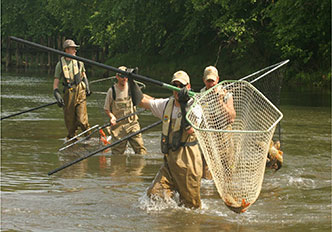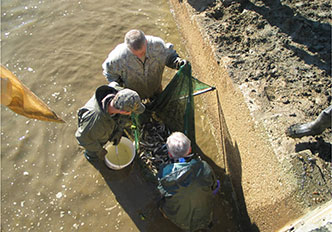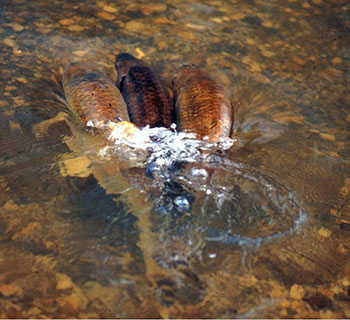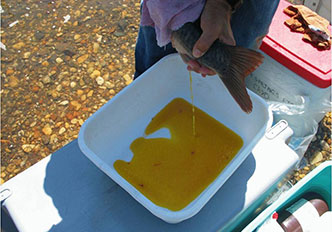Robust Redhorse Restoration
Successfully Managed Recovery

The robust redhorse is a large, long-lived member of the redhorse sucker family. Robust redhorse existed from the Altamaha River drainage in Georgia to the Yadkin/Pee Dee River drainage in North and South Carolina. Adults can live up to 27 years, reach 30 inches in length, and weigh up to 18 pounds. The species was rediscovered in Oconee River, Georgia in 1991 after being lost to science for over 100 years. Two additional populations were subsequently identified in Savannah River, Georgia and Pee Dee River, North Carolina A cooperative effort through the Robust Redhorse Conservation Committee began in 1995 between state, federal, and private entities, has been underway to recover the species to avoid its listing as a federal threatened and endangered species.
Beginning in 2004 and over nine years, 72,000 5-inch juvenile robust redhorse were produced and stocked by South Carolina DNR hatcheries into the Santee River System using parents collected from the Savannah River. Observation of mature males occurred in 2008 when stocked fish reached four years of age. Since then, adults have been collected in every stocked segment of the lower Broad River and the Congaree/Wateree River segment. Spawning activity was first observed in 2010, when the first stocked females reached sexual maturity.
Through use of genetic markers, DNR's Marine Division Genomics researchers have developed tools to differentiate hatchery-reared and wild-spawned robust redhorse. Since 2015, eight juvenile robust redhorse have been collected that were determined to be wild-spawned individuals demonstrating the latest measure of project success.

Robust Redhorse grid electro fishing

Robust Redhorse harvesting

Spawning triad of Robust Redhorse

Egg taking Robust Redhorse
Additional Information
- DNR's Robust Redhorse Re-introduction Reaches Important Milestone
- Species information
- Robust Redhorse SWAP information (PDF)
